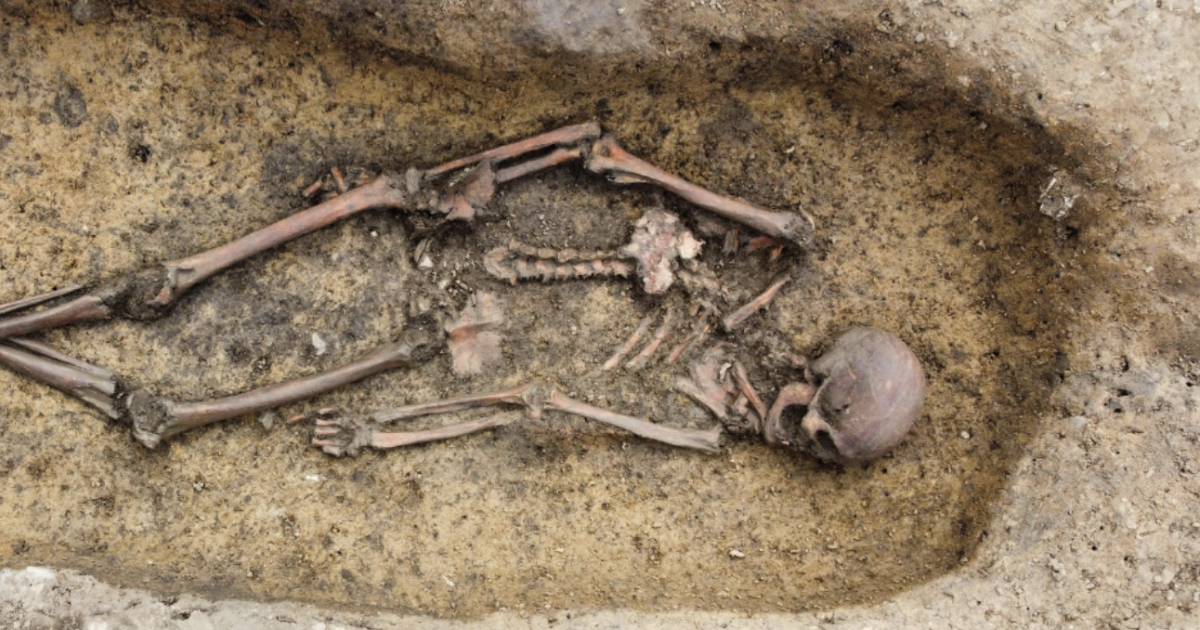The recent discovery of over 50 well-preserved Viking skeletons in Denmark has sent ripples through the archaeological community, providing a rare glimpse into the lives of these seafaring warriors. This remarkable find, located in a 2,000-square-meter burial ground dating back to the 9th and 10th centuries, promises to revolutionize our understanding of Viking society, shedding light on their health, diet, origins, and even their familial relationships.
A Treasure Trove of Insights
The extraordinary preservation of these skeletons has ignited a wave of excitement among archaeologists, who believe the remains will yield a wealth of information about the Vikings. “This discovery offers extraordinary opportunities to perform a wide range of scientific analyses, which can reveal more about the general health, diet, and origins of those buried,” explained Michael Borre Lundø, archaeologist and curator at Museum Odense. The meticulous excavation is already revealing intriguing details about the individuals laid to rest within this ancient burial ground.
Unearthing the Lives of Vikings
The exceptional state of preservation has allowed archaeologists to collect DNA samples from the skeletons, which may be analyzed to establish familial connections. This groundbreaking research holds the potential to provide answers to longstanding questions about the social structure of Viking society.
Sarah Croix, an associate professor at Aarhus University, aptly articulated the excitement surrounding this prospect: “It will be incredibly exciting to learn where these people came from and whether the same families were buried here across multiple generations.”
Unearthing Status and Rituals
The archaeological team has already uncovered compelling evidence suggesting varying social statuses within the Viking community. One notable discovery is the burial of a woman in a wagon hull, accompanied by a collection of precious objects. This discovery offers a poignant window into the status and rituals surrounding death within Viking society.
Clues to Viking Burial Practices
The woman’s grave contained a beautiful glass bead necklace, an iron key, a knife with a silver-threaded handle, and a small shard of glass potentially used as an amulet. At the foot of the wagon, archaeologists unearthed a finely decorated wooden chest, the contents of which remain a mystery. The team speculates that the woman was buried with her most prized possessions, a testament to her social standing.
Additional skeletons were discovered adorned with jewelry, hinting at the cultural significance of these ornaments. These finds further illuminate the complexity of Viking burial practices and offer a tangible glimpse into the values and beliefs of this fascinating society.
Ongoing Discoveries and Future Insights
This extraordinary find joins a recent surge of archaeological discoveries related to the Vikings. In 2023, nearly 300 silver coins believed to be over 1,000 years old were unearthed near a Viking fortress site in northwestern Denmark. And in 2020, Norwegian archaeologists uncovered a large Viking burial site.
These discoveries are fueling an unprecedented wave of research into Viking culture and history. As archaeologists meticulously analyze the remains, they anticipate unraveling even more secrets about the Vikings’ lives, beliefs, and impact on the world.
Take Away Points
- The discovery of 50 well-preserved Viking skeletons in Denmark has provided valuable insights into their lives and burial practices.
- The extraordinary state of preservation allows archaeologists to conduct DNA analysis, potentially revealing family connections and shedding light on Viking social structures.
- Evidence suggests varying social statuses within Viking society, as indicated by burial objects and practices.
- Recent Viking discoveries, including silver coins and burial sites, have sparked intense archaeological interest, fuelling a deeper understanding of Viking history and culture.




